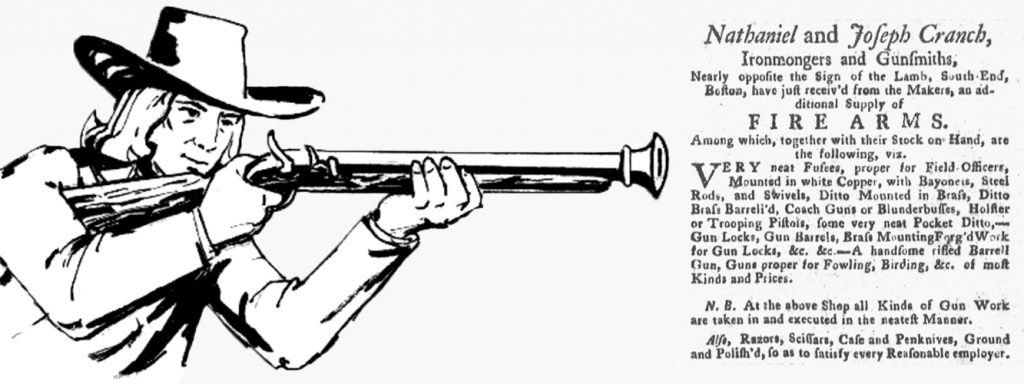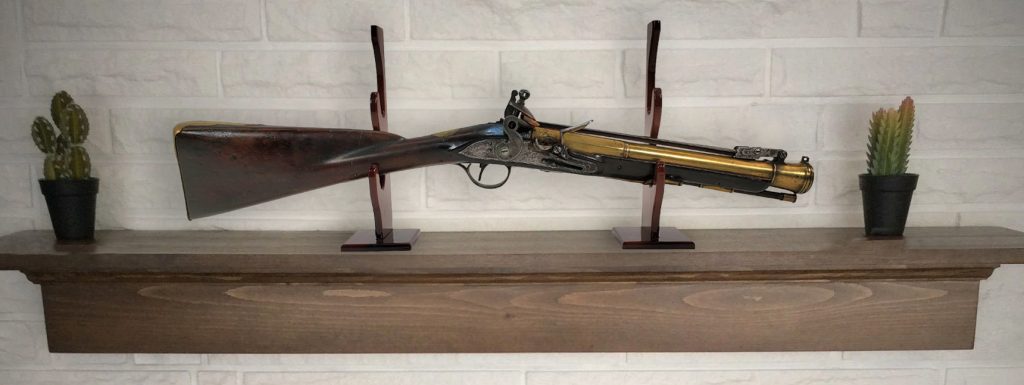Today common flintlock and percussion rifles have become more of a decorative object than a collector’s item. If they are made by an unnamed maker or have condition issues they can be purchased fairly cheaply to hang on a wall or over the fireplace. Even if the gun is damaged and not functional, if it has a figured maple stock it is prime wall hanging fodder. A few years ago, at an auction preview a person walked in thinking it was a preview for an Americana sale. He decided to snoop around and found three blunderbusses that I had. The next day at the auction he bought all three. I was interested to know why he bought them as he wasn’t an antique arms guy. He said to him they were very interesting, good looking, and he wanted to hang them in his office. So, he had purchased all three of these funky little flintlocks as a decoration for his workspace.

In An Universal Military Dictionary published in 1779, the definition of a blunderbuss is “a well-known fire-arm, consisting of a wide, short, but very large bore, capable of holding a number of musket or pistol balls, very fit for a narrow passage, door of a house, stair-case; or in boarding a ship.” A search of advertisements in 18th century newspapers list them being sold at most shops in major cities so it makes sense why there are quite a number that exist today.
Some of them have steel barrels, but the most handsome have brass barrels with a flared muzzle and brass fittings. Some also have spring-loaded bayonets. The example I have shown is one that is perfect for a decorative piece and is affordable. It has a dark walnut stock, brass butt plate, brass trigger guard with a front acorn finial, brass wrist plate and ramrod pies, a brass barrel marked “London” on the top, a spring-loaded bayonet, and is a flintlock. However, this particular gun had been converted to a percussion firing system in the 19th century. At some point over the past 20 or so years, it was reconverted back to flint. Not being in its original flint form affects the value of the gun to someone who wants a pristine example, but it now makes it affordable to someone who wants it for historical as well as decorative value. They do look pretty cool on the mantle!





